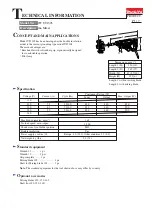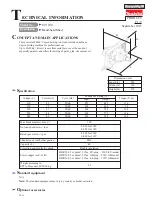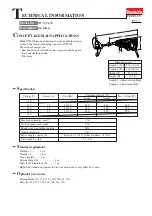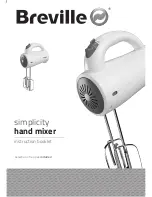
INSTRUCTIONS FOR
OPERATION
6.0 Instructions for operation
The Cinemix is designed to be the perfect answer for Post Production, multitrack
and MIDI studios. In order to get more familiar with the Cinemix, we shall
discuss the entire recording process and divide it into five basic sequences.
Sequence 1 through 4 are for the more conventional recording studios, and
sequence 5 is for the MIDI studio.
1. The session - Recording from microphone or line input onto the multitrack
machine. This could be from one or more channels at a time.
2. The playback - In this mode you would listen to what has been recorded on
the multitrack machine.
3. The overdub - Overdubbing is listening to already recorded tracks and
recording on empty tracks until all tracks are filled.
4. The remix - Playing of all recorded tracks together with signal processing
equipment and all that is necessary to create the final mixdown.
5. The MIDI or Virtual Tracking - Programmed keyboards, drum machines,
reverbs, effects, any singing and who knows what else, all at the same time direct
to your Dat Machine, two track master machine, or cassette deck.
6.1 The Tracking Session
This is normally the beginning of a project. All input channels are placed in the
mic mode by leaving the line switch in the up position if the microphone input is
to be used in this channel. Phantom powering is applied if necessary. The EQ
switch should be in the up position unless you require EQ on that channel signal.
The signal flows through the Channel fader and is available postfader to be
routed by way of the ARM system feeding the input to your multitrack recorder.
The LED bargraph reads the outgoing signal if the master Tape switch is in its
off state.
Microphone / Line Gain
The amount of gain required may depend on the type of microphone being used,
the sound pressure level, and the distance between the sound source and
microphone. When the line switch is activated, the same (upper) gain control
varies the gain of the separate electronics for the balanced line input.
The "phase" switch affects both mike and line inputs. After plugging in a mike or
line signal, depress the channel solo switch alongside the channel fader you are
setting, set the solo status switch to pfl in the master section, then turn the gain
control (of that channel) clockwise until a "0" output level is reached on the
master ledbargraph/VU meters. Now slide up the channel fader to "0". Now
switch the solo out. If the signal source gets louder or softer, it may be necessary
to re-check this setting.
The volume will also fluctuate if you boost or cut the equalizer section.
Cinemix manual page: 43
Summary of Contents for CinemIX
Page 1: ...Cinemixman lwp CinemiX OWNERS MANUAL Cinemix manual page 1 ...
Page 59: ...12 0 SIGNAL FLOW MASTER SECTION Cinemix manual page 59 ...
Page 60: ...13 0 SIGNAL FLOW INPUT MODULE Cinemix manual page 60 ...
Page 61: ...14 0 System signal flow Cinemix Cinemix manual page 61 ...
Page 62: ...15 0 Interfacing with external equipment Cinemix manual page 62 ...
Page 63: ...16 0 Interfacing with DS4E CP65 17 0 Cinemix manual page 63 ...
Page 64: ...17 00 Interfacing with Dolby SEU4 SDU4 Cinemix manual page 64 ...
Page 65: ...18 00 Interfacing with JS 300 Cinemix manual page 65 ...
Page 76: ...CinemiX SERVICE MANUAL ...
Page 78: ...Powersupply logic PS_DIG2A 1 Power distribution 2POWER CON Cinemix 20B 1 ...
Page 79: ......
Page 80: ......
Page 81: ......
Page 82: ......
Page 83: ......
Page 84: ......
Page 85: ......
Page 86: ......
Page 87: ......
Page 88: ......
Page 89: ......
Page 90: ......
Page 91: ......
Page 92: ......
Page 93: ......
Page 94: ......
Page 95: ......
Page 96: ......
Page 97: ......
Page 98: ......
Page 99: ......
Page 100: ......
Page 101: ......
Page 102: ......
Page 103: ......
Page 104: ......
Page 105: ......
Page 106: ......
Page 107: ......
Page 108: ......
Page 109: ......
Page 110: ......
Page 111: ......
Page 112: ......
Page 113: ......
Page 114: ......
Page 115: ......
Page 116: ......
Page 117: ......
Page 118: ......
Page 119: ......
Page 120: ......
Page 121: ......
Page 122: ......
Page 123: ......
Page 124: ......
Page 125: ...CinemiX CinemiX SERVICE MANUAL MATRIX ...
Page 127: ......
Page 128: ......
Page 129: ......
Page 130: ......
Page 131: ......
Page 132: ......
Page 133: ......
Page 134: ......
Page 135: ......
Page 136: ......
Page 137: ......
Page 138: ...CinemiX CinemiX SERVICE MANUAL MOTORFADERS ...
Page 140: ......
Page 141: ......
Page 142: ......
Page 143: ......
Page 144: ...CinemiX CinemiX SERVICE MANUAL DYNAMICS ...
Page 145: ...Circuit diagram list Dynamics Description PCB name Number of Sheets Dynamics CPU DYN_1B 2 ...
Page 146: ......
Page 147: ......
















































